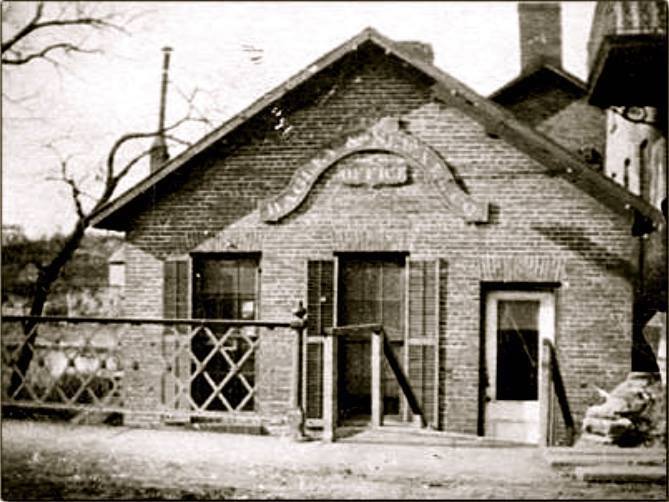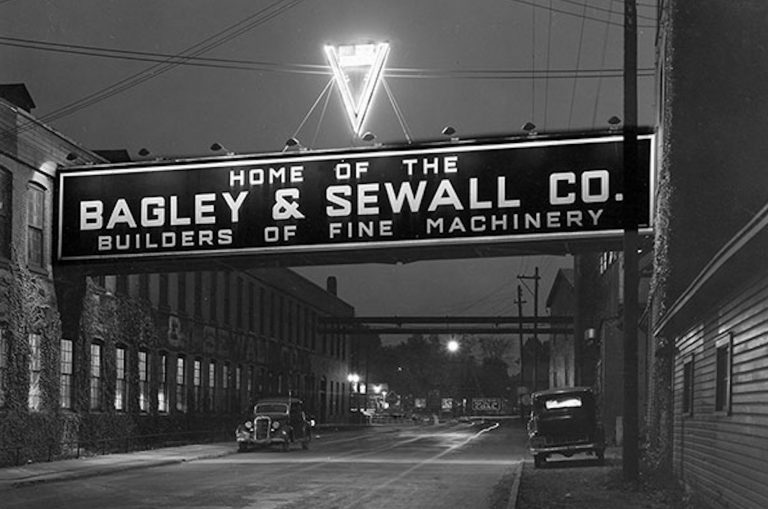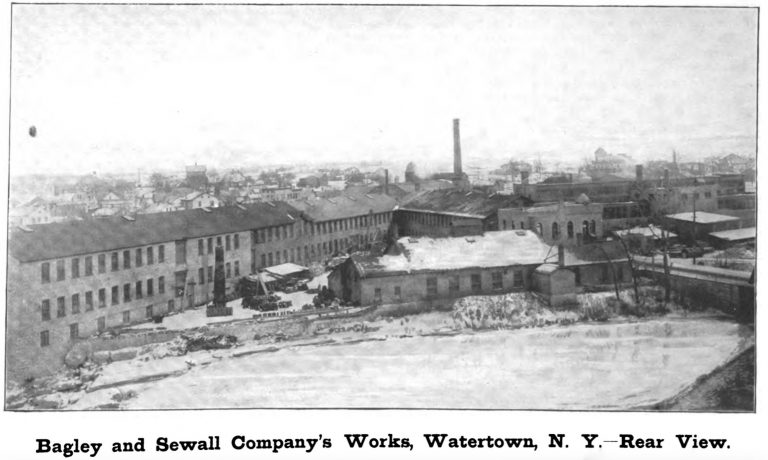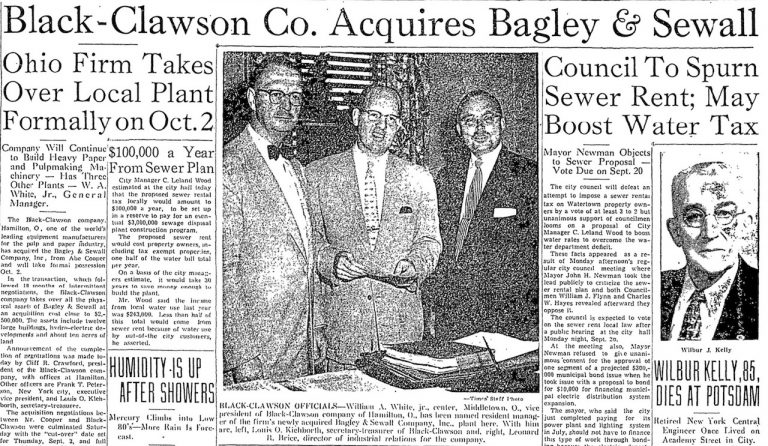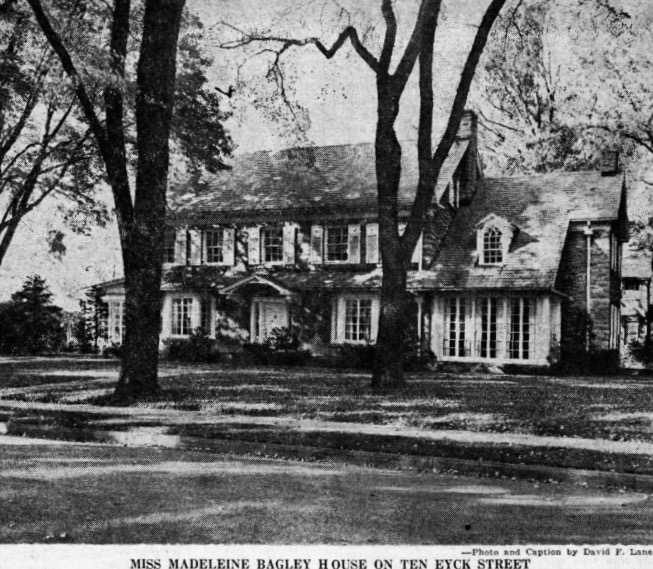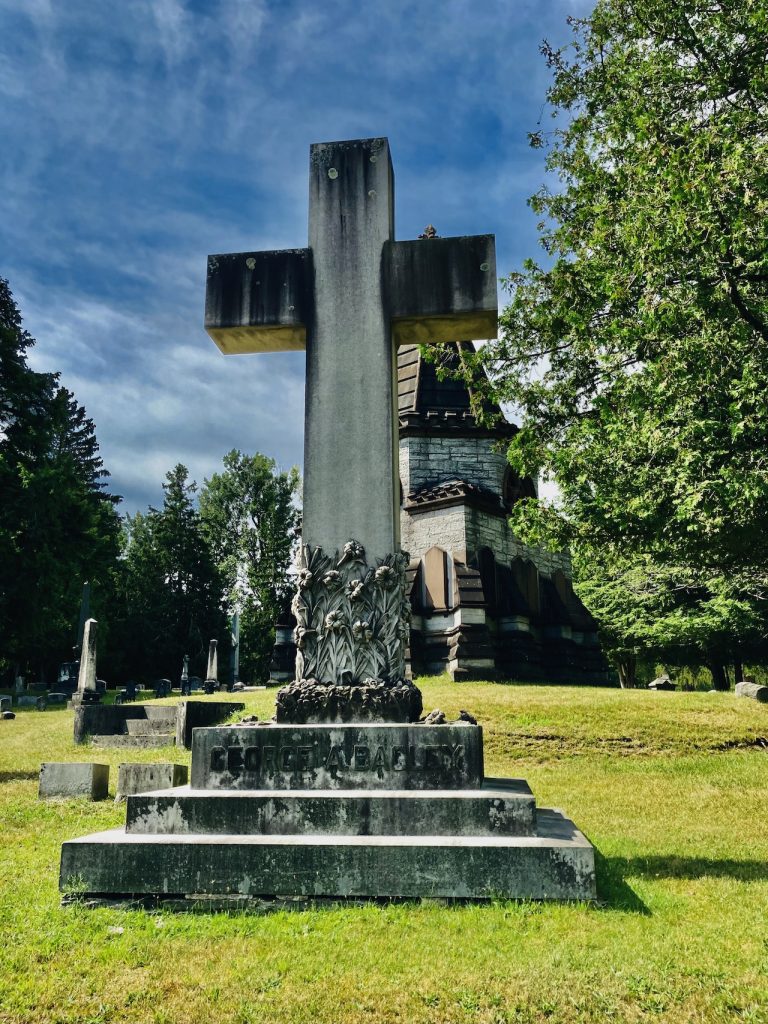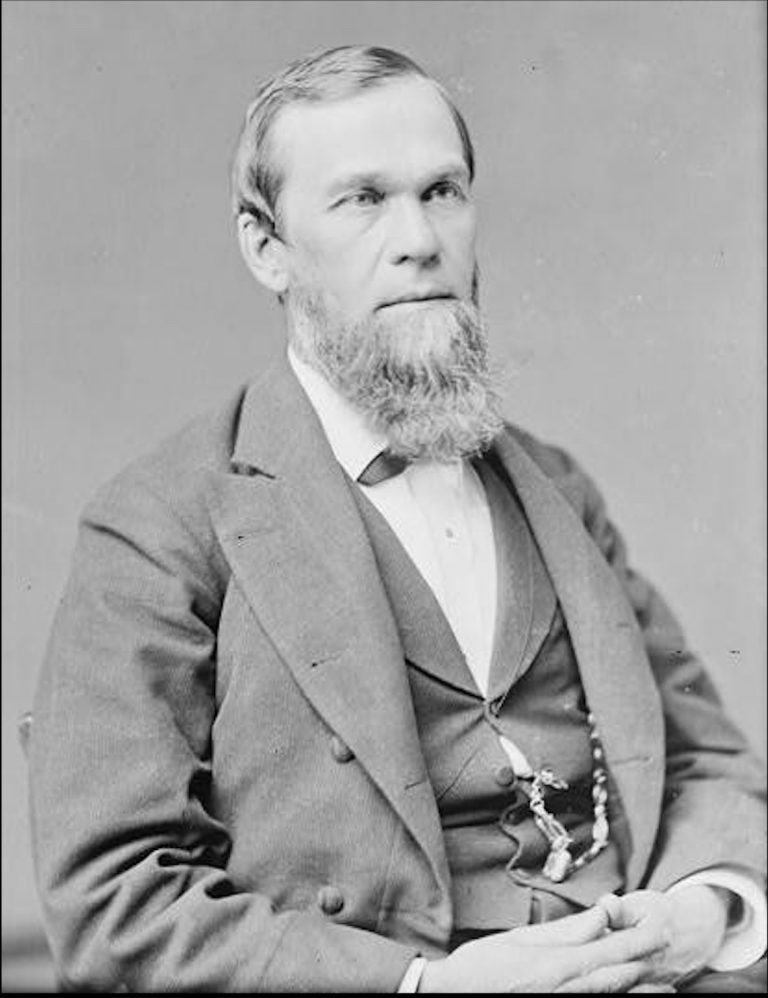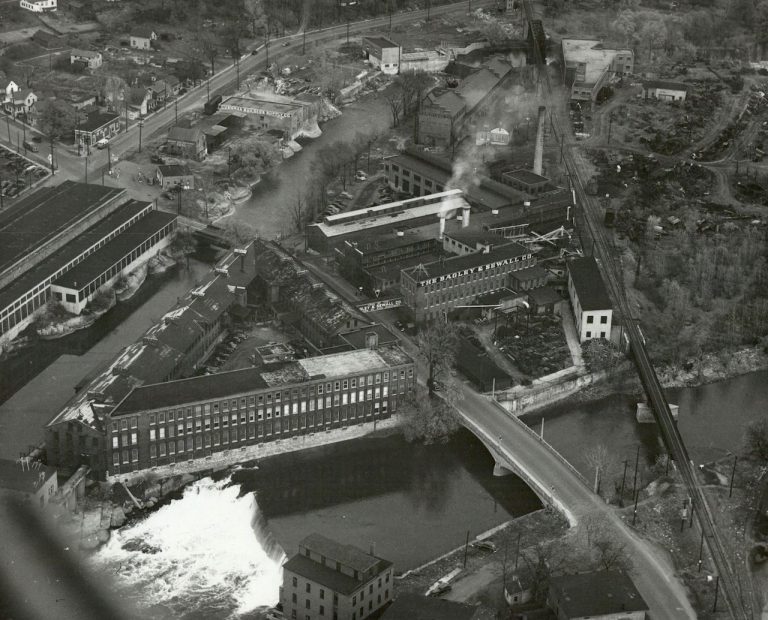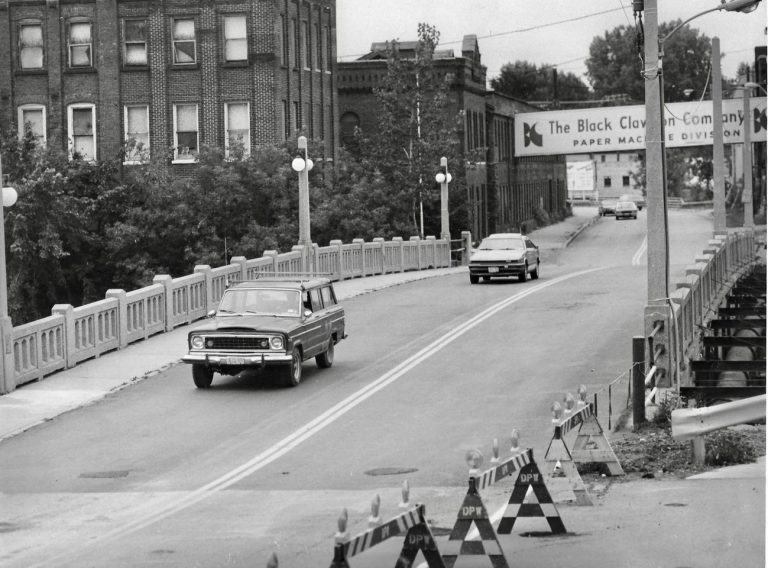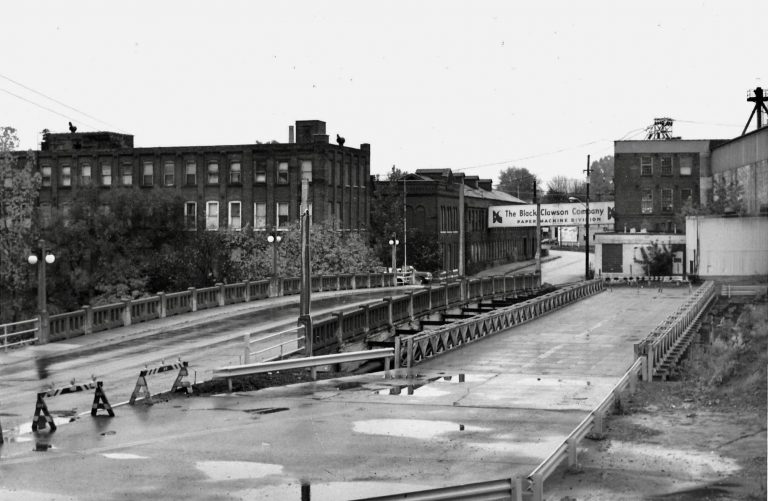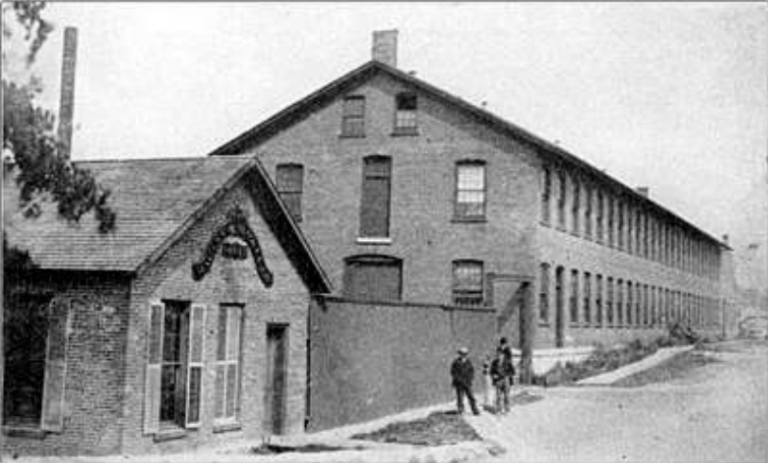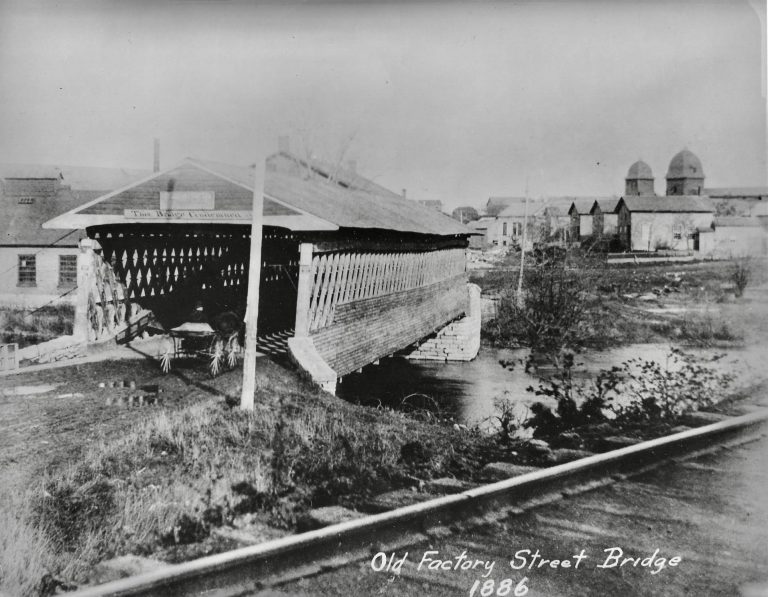Goulding, Bagley & Sewall Became Bagley & Sewall, Later Purchased By Black Clawson
The origins of Black Clawson date back to the 1820s when George Goulding opened a business on Fairbanks Street for manufacturing machinery and mill supplies. The company had many partners in its early years, Benjamin Berry and Andrew Anderson being two, before George A. Bagley and Edmund Q. Sewall, two lawyers, partnered to form the Goulding, Bagley & Sewall company in 1853.
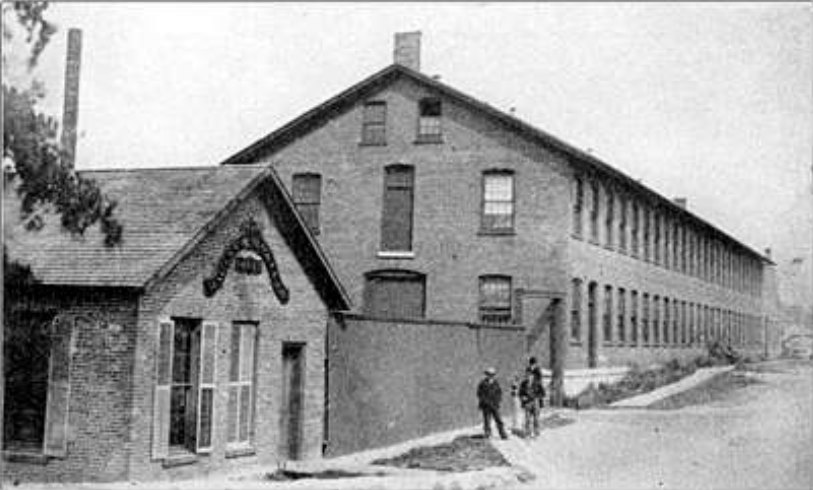
Eight years later, Bagley & Sewall bought out George Goulding, though Goulding would stay on for several more years before retiring in 1865 at 50. Goulding later passed away in 1878 at the age of 62. During 1875 – 1879, George Bagley was a member of the U. S. House of Representatives after serving as the President of the village of Watertown in 1866.
Joel Monroe’s Through Eleven Decades of History gives an account of Bagley & Sewall’s business around these years before incorporating—
Messrs. Bagley & Sewall increased the lines of their business and began building engines and boilers on a large scale for those times, and in fact became the best known engine concerns in Northern New York. Mowing machines were added to the list, with plows and other agricultural machinery, then a line of pumping machinery, the celebrated Green rotary pump being among their outfit.
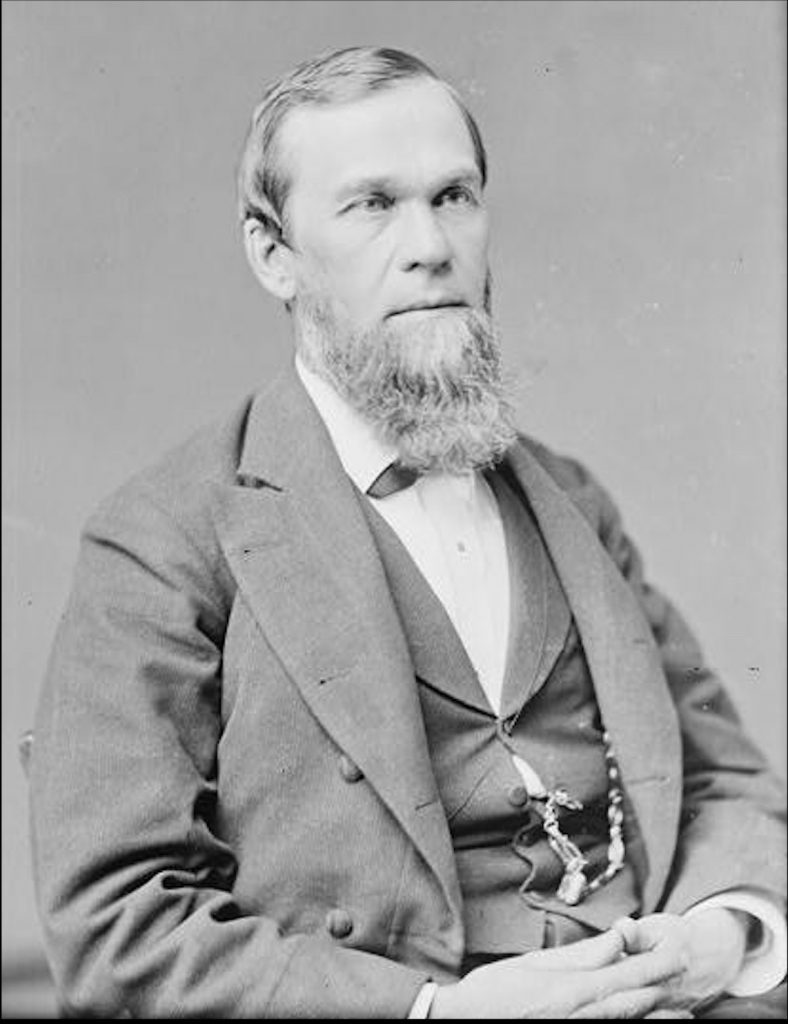
Bagley & Sewall also later produced iron castings for the nearby Davis Sewing Machine Company and all the castings for the Eames Vaccuum Brake Company, later known as the New York Air Brake Company.
In 1882, the Bagley & Sewall Co. was incorporated. At about this point, or shortly thereafter, the business focused most of its business around paper-making. From John A. Haddock’s Growth of a Century, it is noted—
The Bagley & Sewall Company began the manufacture of Fourdrinier paper machines in 1890, and met with an immediate pronounced success, standing easily in the front rank of manufacturers of such machinery. Their machines have been placed throughout the paper-making districts of the United States and Canada, from Maine to the Pacific Coast, and have, without exception, earned for themselves a most enviable reputation for unequalled capacity of production and economy in maintenance.

The departing of the Davis Sewing Machine Company in 1888 to Dayton, Ohio, and the New York Air Brake building its foundry led the Bagley & Sewall Co. to expand further into the paper industry – a decision that proved to be a profitable one. Meanwhile, Edmund Sewall was inactive from 1888 on due to a physical disability. He passed away shortly thereafter in 1892 at 66 and was buried in Brookside Cemetery.
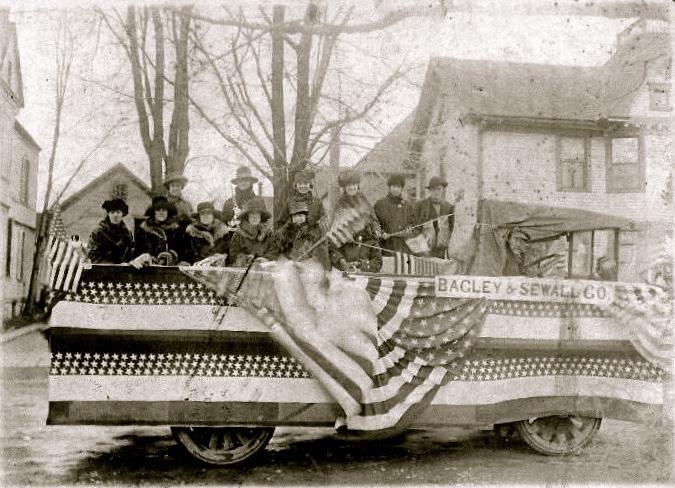
Black Clawson Purchases Bagley & Sewall In 1954
In August of 1954, it was announced that Black Clawson, based in Hamilton, Ohio, was purchasing the 100-plus-year-old Bagley & Sewall operation. The Watertown Daily Times reported on the 24th of that month—
The Black Clawson company, Hamilton, Ohio, one of the world’s leading equipment manufacturers for the pulp and paper industry, has acquired the Bagley & Sewall Company, Inc., from Abe Cooper and will take formal possession Oct. 2.
In the transaction, which followed 18 months of intermittent negotiations, the Black Clawson company takes over all the physical assets of Bagley & Sewall at an acquisition cost close to $2,500,000. The assets include twelve large buildings, hydro-electric developments and about ten acres of land.
Announcement of the completion of negotiations was made today by Cliff R. Crawford, president of the Black Clawson Company, with offices at Hamilton. Other officers are Frank T. Peterson, New York City, executive vice president, and Louis O. Kiehborth, secretary-treasurer.
The acquisition negotiations between Mr. Cooper were culminated Saturday with the “cover-over” date set for Thursday, Sept. 2, and full ownership going to Black Clawson on Oct. 2.
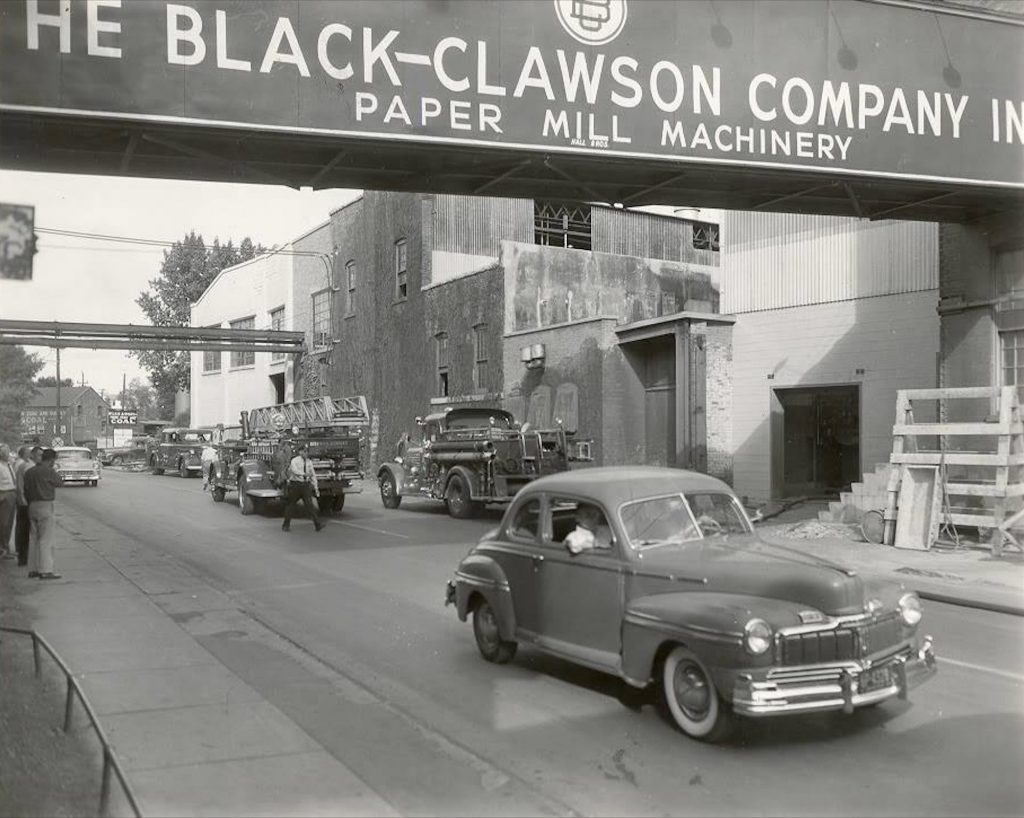
At the time of transition, the Bagley & Sewall Co. employed 400 locally in Watertown. By joining Black Clawson, the total number of employees throughout its six-location operations was brought to 1,500, with over 800,000 square feet of space. The other locations included Hamilton, Ohio; Middletown, Ohio; Fulton, N.Y.; a foundry division in Middletown, Ohio; and an international division in England.
Abe Cooper had owned Bagley & Sewall since 1939, bringing it back from a pre-war lull to a plant of great significance during WWII due to the lack of manufacturing facilities for the war effort. After the war, the plant returned to the construction of paper mill machines and, though successful, its future had been in question over the years leading up to the sale due to Cooper’s consolidating many of his enterprises. The sale to Black Clawson assured the plant’s future as it reached a market of machinery that otherwise would have required expanding its own facilities.
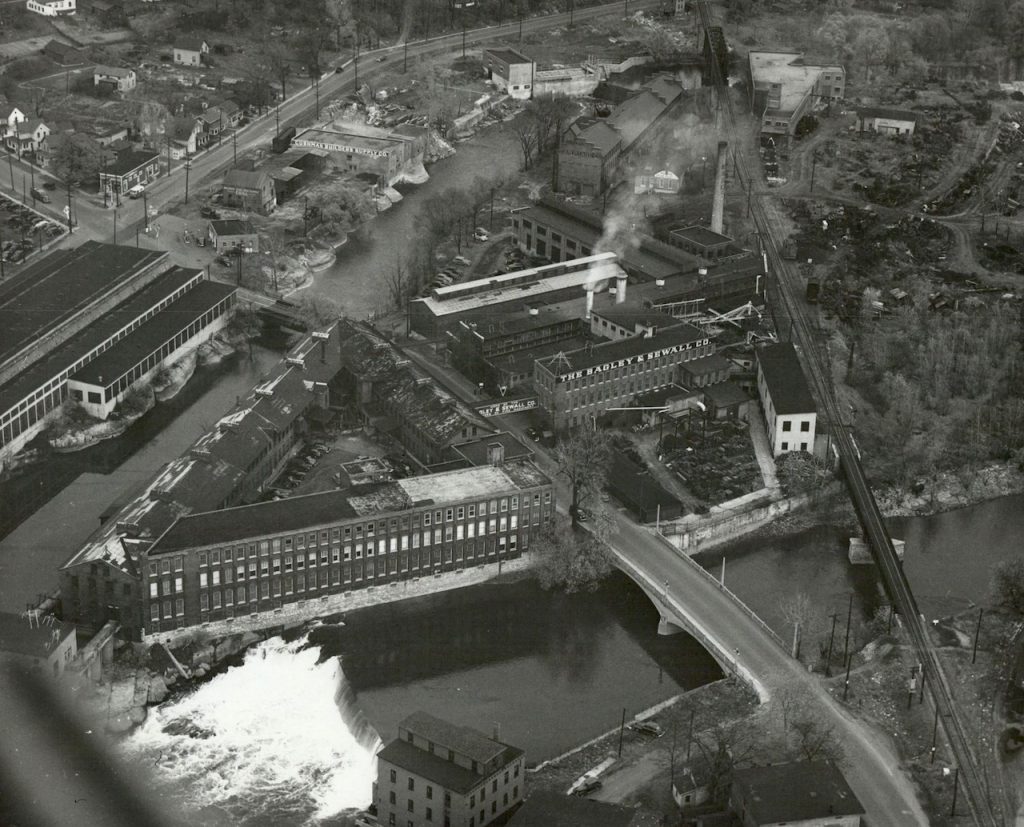
The Hamilton Journal praised the purchase of Bagley & Sewall, noted in the Sept. 20, 1954 Watertown Daily Times as saying—
“It therefore is with much pride that Hamilton learns of the continuing growth of one of her basic industries — the Black Clawson company. By the addition of another division in Watertown, N.Y., the Black Clawson company becomes a world leader in the manufacture of paper-making machinery.
Today, with its various facilities, Black Clawson, which dates back to 1873, can manufacture every conceivable type of equipment needed in the preparation of pulp and the manufacture of paper and paper board.”
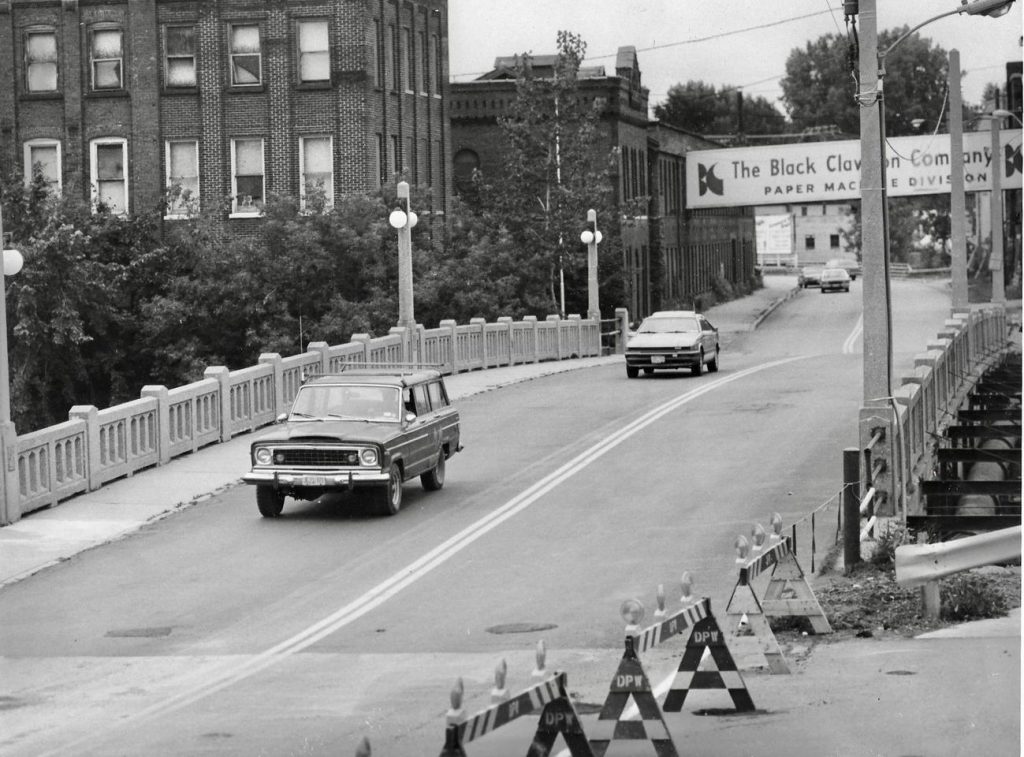
Beginning Of The End In The 1990s
While the Black Clawson purchase of Bagley & Sewall Co. in 1954 was spearheaded by Karl F. Landegger, Landegger’s grandson, Carl M. Landegger, sold Black Clawson to Group Laperriere & Verreault Inc. of Quebec in 1996. The operation became known as GL&V/Black Clawson-Kennedy Pulp & Paper Machine Group. Carl M. Lendegger died shortly afterward at age 44 in 1997.
After contemplating the building of a new $27M facility on West Main Street in 1997, the Groupe Laperriere & Verrault/Black Clawson-Kennedy Pulp & Paper Machine Group U.S.A. Ltd. ultimately shut down the remaining factory buildings on June 29 of 1998, and the plant’s remaining equipment was sold in an auction. The Watertown Daily Times reported on Nov. 12, 1998—
GL&V, Quebec, acquired the paper machine division of Black Clawson Co. in 1996, along with a lease with an option to buy the two Black Clawson buildings at 103 Pearl Street, just north of the Black River.
That lease expires March 15, and the buildings will revert to Black Clawson if nobody has purchased the property before then, Mr. Pecori said.
The 98,000-square-foot building on the river is marketed as storage space, but may be torn down. The 68,000-square-foot building next door, where GL&V operated, includes recently renovated office space.
Black Clawson plans to Demolish its two remaining mammoth structures on the island, although it does not yet have a time table, said Robert Strasburg, the company’s vice president of business development.
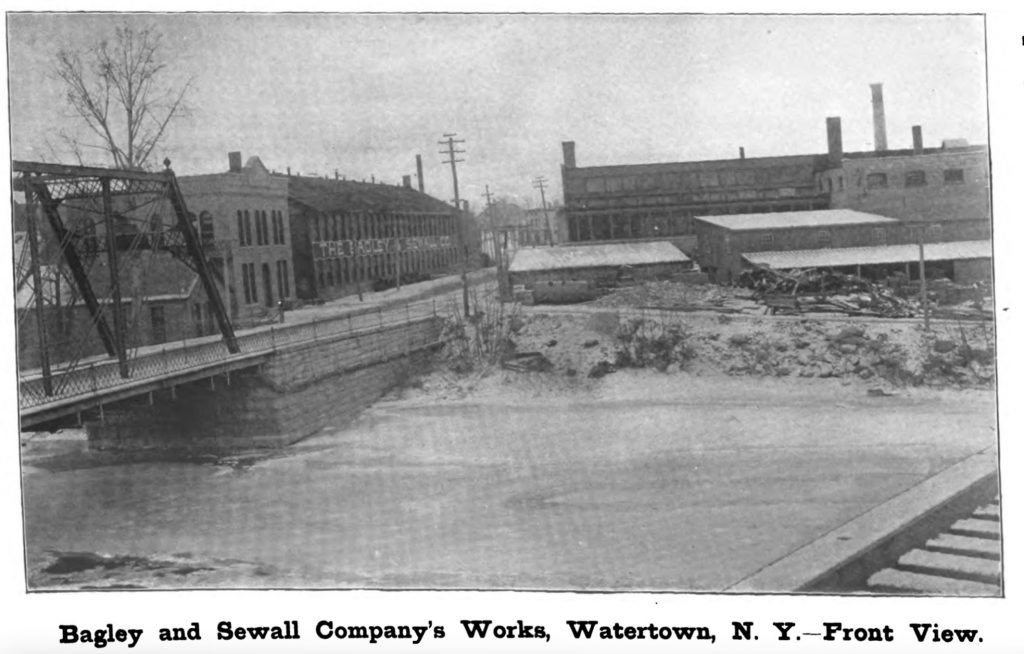
The factory’s closure was spurred by the Canadian company’s purchase of a facility at Hudson Falls in September of 1997 that made similar products more efficiently. Forty-eight people were employed at the Pearl Street site, only six employees remaining on its last day of operation, while the research laboratory continued to operate with 6 employees at 595 W. Main Street.
Sewall Island, where the majority of Black Clawson was once located, was given to the city. Extensive environmental investigations and subsequent remediation were undertaken to clean the island of remaining contaminants. The $1.5 million effort was completed in 2019, and the island is currently in the planning stages for redevelopment.
